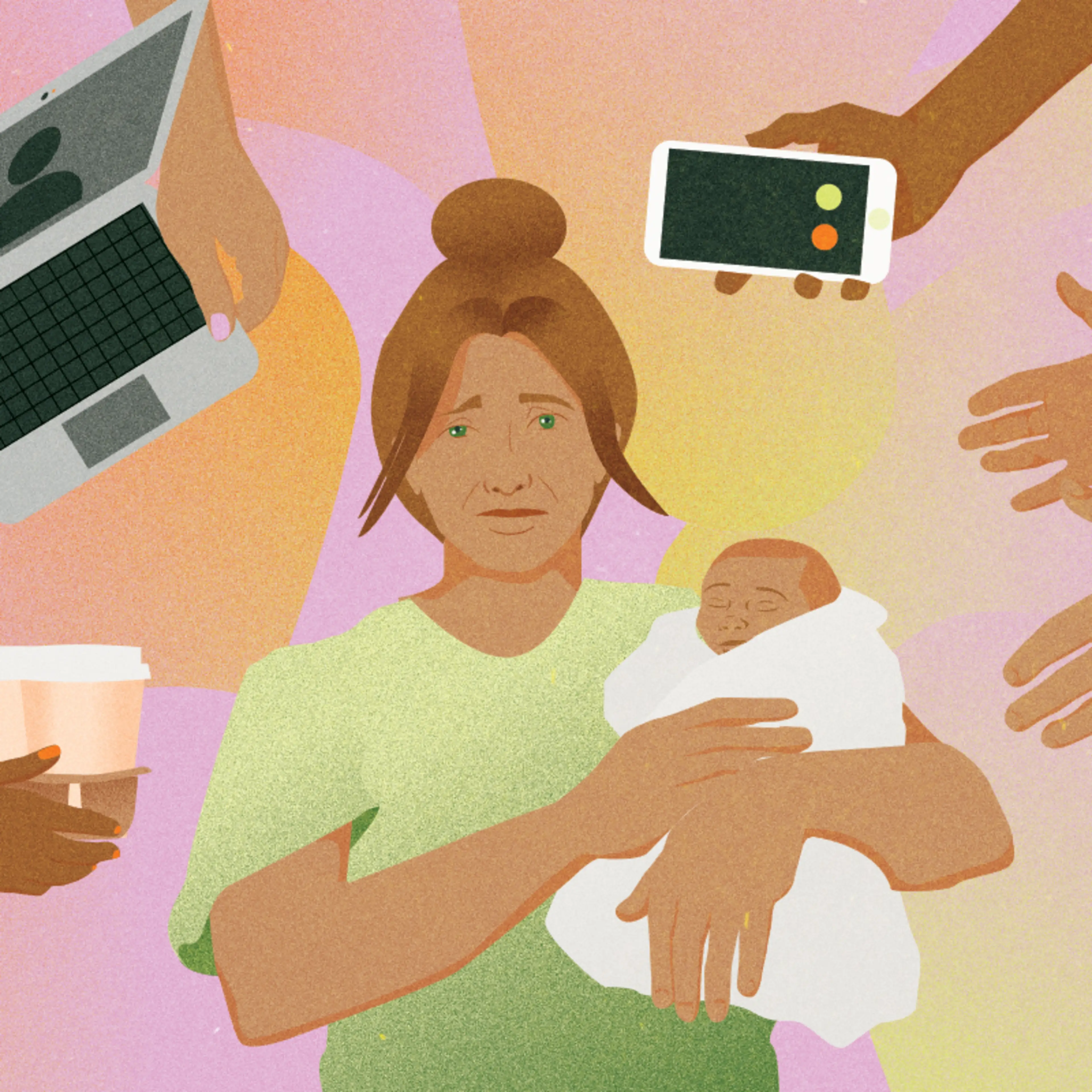TLDR: Meal trains are excellent ways to support new parents. Whether you’re expecting or a good friend to expectant parents, here’s how to organize dinner delivery, including food ideas and cooking alternatives.
Your baby’s needs are many, but so are yours–or your close friend’s–as a new parent. And we’ve got just the thing to keep everyone happy, healthy, and supported in the early postpartum period. Two words: meal train. A meal train is when family and friends coordinate the delivery of multiple meals so that the new parents can have home-cooked food while they’re taking care of a new baby.
The first 40 days after giving birth include precious moments, as well as ups and downs as you figure out new routines. It’s also a crucial period of rest and recovery. The last thing any new parent wants to do is figure out what’s for dinner.
We’re all about calling on our village of experts, friends, and family members to help expectant parents prepare for the postpartum period as much as possible.
What is a Meal Train?
Meal trains are a great way to lean on your village for support. We’re talking family, mom friends, and whoever else wants to help support you during your time of transition from expecting to parent of a newborn. They coordinate the delivery of meals, right to your door.
A meal train allows you to:
Focus on enjoying your new baby with your partner
Pay more attention to nourishing yourself back to health
Eliminate the worry of meal planning for yourself and your family
Get help from your mom friends and family in a safe, healthy, and socially distant way (you may feel safer not exposing your newborn baby to outside germs just yet)
Julie Vincent is a mom, meal train expert, maternal support expert, founder of Hearth Wellness1 , and a holistic health coach for busy moms. She gave us some insight into what goes into a meal train, whether you’re setting one up for yourself or an expectant mom friend.
“Having a solid postpartum nutrition plan in place to nourish yourself back to health is important, and a meal train can be a big part of this!” says Vincent.
Meal Train 101: The Basics
First things first, there are some important meal train tips about the food you make for someone else, or request if you’re the expectant parent:
Be clear about what you want to eat or say hello to lots of lasagna.
Don’t be shy about sharing dislikes, not to mention any necessary information about allergies, sensitivities, or diet preferences (vegetarian, vegan, etc.). And don’t forget to list your favorite foods, too!
If you’re providing food for someone else, make sure everything is labeled and includes any reheating or baking instructions.
When: Get Organized
It’s best to start getting your meal train ready during the last month of pregnancy. You can organize the meals for any day of the week and for however long you want. It’s up to you!
“For most new parents, a month is a generous amount of meal coverage, but I have seen others that have stretched out longer as parents only wanted food a few times a week,” says Vincent.
Who: Rally Your Village
You can ask as many people as you’d like to participate in your support team. It’s not a prerequisite that your meal train participants are experts in the kitchen—they don’t even have to prepare the meals for you. Gift cards or food delivery services are great alternatives.
“Not everyone loves to cook, but they definitely want to support you,” says Vincent.
You can share a list of local restaurants, family meal caterers you like, or use a food delivery service like UberEats, Caviar, or DoorDash.
If you’re the expectant parent, consider designating one or two close mom friends or family members to be your “go-to meal train contact.” You want them to be well organized, readily available, and able to answer any questions that come up.
What: Focus on Nutrient-Dense Foods
Any warm meal will be appreciated by new parents, but if one of them is postpartum and/or breastfeeding, “You might be surprised to learn that nutrient needs in the early postpartum phase—and especially while breastfeeding—are higher than while you were pregnant,” says Vincent.
“Warming” foods like steamy broths and soups, and recipes with warming spices like cinnamon and ginger are ideal for post-birth recovery. These are also great for giving nutrition and energy to non-birthing parents.
Here is a rough list of items you may want to consider incorporating into your meal train ingredient list:
Iron-rich foods: lentils, beans, and chickpeas
Proteins: slow-cooked meats, eggs, nuts
Healthy fats (especially good for parents who are breastfeeding): avocados, coconut oil, soybeans
Omega-3s: Salmon, flaxseeds, chia seeds, walnuts, and navy beans
Cooked grains: Quinoa, bulgur, millet, brown rice, and whole wheat bread
Meal Train Frequently Asked Questions
What’s the best way to set up a meal train?
Mealtrain.com has become a go-to for many people. Or you can go the traditional route and use a Google doc, email, text thread, or put a friend (like a really good friend!) in charge to take it on.
How does a meal train drop-off work?
Be sure to provide a preferred drop-off time. It might not be a mealtime, and that’s okay! If you prefer a little more privacy or contactless delivery, putting a cooler outside is a great solution.
What are the best containers for people to bring you food?
Aluminum containers with lids like these are great for main meals. Glass jars or reusable containers or serving dishes work well. But it’s best not to use beloved serving dishes because you might never get them back. (New moms have enough to worry about and keep track of!)
What if I get too many meals?
Can you have too many meals? If this ever happens, simply freeze the meals and save them for later.
Bonus Tip: If you’re making a meal for a new family, you can always make more of the meal and feed it to your own family that night and save the rest for the meal train.











